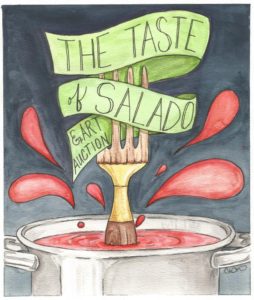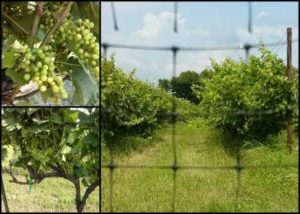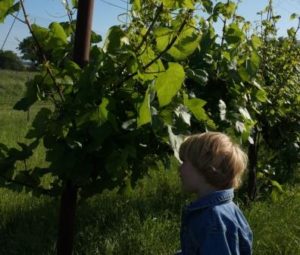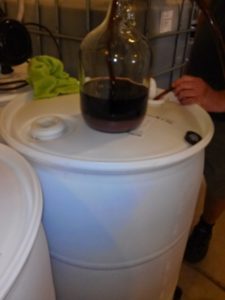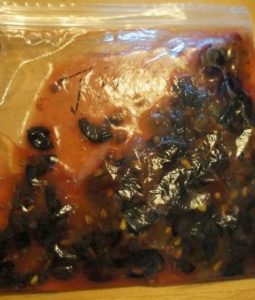
My Production Control Board
It is at this point every year that I say, “ohmigoodness! time to bottle the wine before harvest gets here! Harvest is about 8 weeks away and we need to empty the tanks so that we will have space for the 2015 harvest–which might be big due to all that rain we received in May 2015.
So the last couple of days I have been ordering corks, labels, bottles, capsules and oak in order to have the supplies ready for bottling. Ouch! This is when it is tough to be an entrepreneur. These things cost REAL money folks. And we will be selling this wine late 2015-2016 and maybe even 2017, so it takes a long time to recover that investment in inventory in the wine industry.
Part of the decision making process is crafting a product matrix that makes good sense. What I mean is that as a business owner, I think about what portfolio of wines I want to offer in order to make wine drinkers happy and maximize profit. I feel strongly that I need a dry white, a couple different dry reds and some sweet wine. We have some dessert wines that we produce as well, but I will not be working on those in the next couple of months, so they are not included in this discussion. So my goal is to produce Night Flight, Diamond Back, Big Bully and Rootin’ Tootin’ for sale at Salado Winery Company at about $20/bottle and then to produce three varietal based reds for 3 Texans Vineyard at 3 different price points. Based on my experience selling wine over the last 10 years, I decide on how to blend the wines and price them. Since I often do the selling myself, I have quite strong opinions about what wine drinkers are looking for.
We are a bit behind in trying to get 2014 Night Flight bottled. It needs to be cold stabilized and that is time consuming. We are nearly out of it though, so that is the most pressing work to be done.
The 2014 Diamond Back is a blend of 40% cabernet sauvignon and 60% merlot. The wine has been blended and we have started doing taste tests with various folks. We will use a combination of American and French oak with this wine, both will be medium toast. Some folks preferred the American which had strong flavor up front and some preferred the French which was a little more subtle and let the berry fruit notes of the cabernet shine through. As winemaker, I make the final decision–yeah me! I’ve got a fair amount of this Diamond Back wine on hand to sell, I still have plenty of the 2013 to sell too therefore I want a dry red blend that will appeal to a wide range of wine drinkers. So I will use 25% American oak to get just a bit of that flavor up front, during the initial swallow and 75% French oak to give the subtle notes more boost and help carry the fruit flavors through to the end.
The 2014 Rootin’ Tootin‘ needs a little citric acid added to it, probably about .5g/L to give it a little punch. Since it is warm much of the year here in Central Texas, I like to make wines a wee bit tart, then serve them very cold. I think a wine like that tastes very refreshing that way and this wine is for folks that like their wine on the sweet side.
The 2014 Big Bully still needs to be made! I need to play with various combinations of tempranillo and malbec to see which blend is the best, then we need to see how much tempranillo we want to allocate to the blend vs. how much of the single varietal we want to bottle for 3 Texans Vineyard. I also can backwards plan by predicting how much Big Bully I think I can sell. It will likely be oaked with a little more American oak than the Diamond Back because we want to ensure that they have a very different flavor profile. I am inclined to make a 50-50 blend, but there is much, much more malbec so it is a tough decision to decide how much to blend. Malbec can be a tricky sell since some wine drinkers really hate it! I am not sure why, but some people will not try even try a Malbec, so I am worried about the large amount that we’ve got on hand.
The 2014 3 Texan Cabernet Sauvignon continues to be my darling. We have tried this with American medium toast, French medium toast, & Hungarian medium toast, but our favorite so far is the French heavy toast. We tried this with the chef from Classic Catering yesterday and he was extremely excited about it. He felt that the heavy toast was a much more unique flavor in this wine, almost like cinnamon. I complained to him that the heavy toast oak costs an awful lot more, but he proposed a great idea. He said I should try pre-selling it, so that is what we are going to do. We will have a sample available on Thursday night, July 2nd during the art opening reception and we will take pre-orders at a discounted price. Hopefully I can sell enough through pre-sales to purchase some heavy toast French oak and make this a terrific bottle of wine with a full retail price of $39.95.
In our preliminary taste tests, we liked medium toast American oak with the 3 Texan 2014 Tempranillo and medium toast French oak with the 3 Texan 2014 Malbec. This needs to be tested in another round of testing with the folks at 3 Texans Vineyard!
Then all of the bottling needs to be scheduled. I’ve ordered corks and capsules for all of this wine, but I did not order all of the bottles or all of the labels. I could not order all of the labels yet because we haven’t decided the allocation for Big Bully. Plus the labels are actually the most expensive part and just like my MBA professor said, CASH IS KING. I also didn’t order all of the glassware either. The pallets of bottles take up too MUCH space and we need lots of messy available work space for harvest. Luckily Salado Winery employees are taking their vacations early in the summer, so all this bottling will be done when they are back. So there you have it. Bottling operations at a winery involve cashflow, space planning, materials, time available and after that, we still have to deal with Murphy’s Law. 🙂
Hope to see you soon!
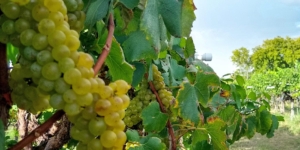
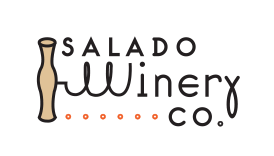
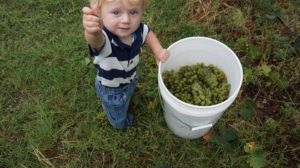 Saturday, July 28, 7:00 am
Saturday, July 28, 7:00 am Come pick grapes with us at the vineyard at 21724 Hill Road, Salado, TX! You can even eat some straight from the vine! Harvest is family friendly. Wear comfortable, cool clothing and tennis shoes. You’ll want to bring a hat, sunscreen, water, and bug spray. We’ll provide everything else you need. We will start bright and early at 7am and go until all the grapes are picked….#Wineryboy has been picking grapes since he was 1!
Come pick grapes with us at the vineyard at 21724 Hill Road, Salado, TX! You can even eat some straight from the vine! Harvest is family friendly. Wear comfortable, cool clothing and tennis shoes. You’ll want to bring a hat, sunscreen, water, and bug spray. We’ll provide everything else you need. We will start bright and early at 7am and go until all the grapes are picked….#Wineryboy has been picking grapes since he was 1!